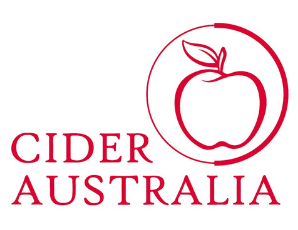Regulation
There are two different definitions of cider in Federal Government legislation. One definition determines whether a product is subject to Wine Equalisation Tax or excise duty. The other definition determines the labelling rules and production standards that apply.
Cider taxation
All alcoholic beverages over 1.15% alcohol by volume that will be consumed in Australia are subject to either excise duty or Wine Equalisation Tax (WET). Alcohol is subject to excise duty if it does not fall under the WET definition of ‘wine’ which is set out in the WET legislation.
In addition to grape wine and grape wine products, the WET definition of ‘wine’ includes fruit and vegetable wine, cider, perry, mead and sake. Cider (or perry) is defined as a beverage that:
- is the product of the complete or partial fermentation of the juice or must of apples or pears
- has no ethyl alcohol added from any other source, and
- has no liquor or substance (other than water or the juice or must of apples or pears) added to give colour or flavour.
Fruit or vegetable wine is defined as a beverage that:
- is the product of complete or partial fermentation of the juice or must of fruit or vegetables or product derived solely from fruit or vegetables,
- has no ethyl alcohol added from any other source (except grape spirit or neutral spirit),
- has no liquor or substance added to give colour or flavour (except grape spirit or neutral spirit), and
- contains between 8% and 22% (inclusive) by volume of ethyl alcohol, or
- if grape spirit or neutral spirit has been added, contains between 15% and 22% (inclusive) by volume of ethyl alcohol.
Cider or perry that is flavoured with other fruits or vegetables and that contains more than 8% alcohol by volume may be taxed under WET as long as it also meets all of the other requirements for a fruit or vegetable wine. Such products fall under the WET definition of ‘fruit or vegetable wine’ rather than cider.
Ciders that have had flavours added (such as lemon or blackcurrant) or contain anything that may add colour (such as caramel or cochineal) and are less than 8% alcohol by volume are not defined as cider or perry or fruit or vegetable wine, and are therefore subject to excise.
WET is based on the value of the wine and generally is a once only tax applying to the last wholesale sale. WET applies at 29% of the wholesale price (or notional wholesale price) before adding GST. A producer rebate scheme applies to all products subject to WET.
The Australian Taxation Office (ATO) administers alcohol taxes on behalf of the Federal Government and its website contains detailed information on alcohol taxes. For assistance, contact the ATO via the alcohol tax phone help-line on 1300 137 290 or by emailing wettechadvice@ato.gov.au.
Australia New Zealand Food Standards Code
The Australia New Zealand Food Standards Code (the Code) sets out:
- what may be added in the production of cider – permitted ingredients, additives and processing aids
- how the product must be labelled – including when a product can be called cider, perry or fruit wine, and the information that must be included on product labels.
Can I call my product cider?
Cider (and perry) is a subset of ‘fruit wine and vegetable wine’ and under the Code:
- must contain apple and/or pear juice (no less than 75:25 ratio of apple:pear juice for cider, and vice versa for perry)
- may also contain other fruits, vegetables, sugars, honey, grains, spices and alcohol
Any beverage that meets this definition can be labelled as ‘cider’ or ‘perry’.
Interestingly, there are many products on the market that are labelled as cider because they fit within this broad definition of cider, but are not considered a cider for taxation purposes.
What standards apply to cider?
Chapter 1 of the Code contains many general standards that apply to all foods. Note that cider is exempt from the requirements in 1.2.4, 1.2.8 and 1.2.10 relating to ingredient and nutrition labelling.
Part 2.7 of the Code contains standards that apply specifically to alcoholic beverages:
- Standard 2.7.1 – Labelling of alcoholic beverages and food containing alcohol: covers pregnancy warning labels, alcohol content (ABV) and standard drinks information
- Standard 2.7.3 – Fruit wine and vegetable wine: sets out the definition of cider and perry including what ingredients may be added.

